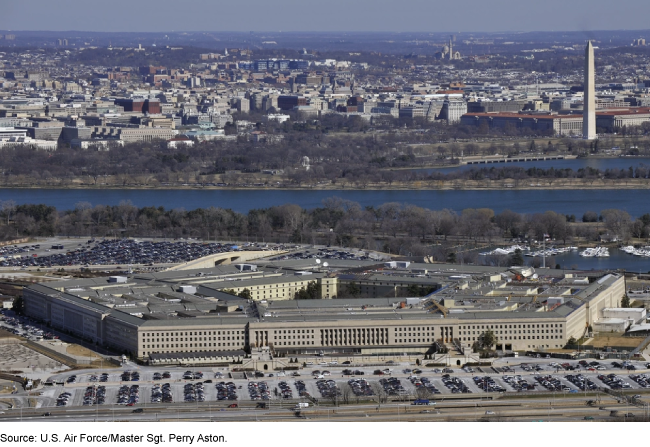Defense Workforce: Opportunities for more Effective Management and Efficiencies
Fast Facts
The Department of Defense is one of the nation's largest employers, with almost 3 million military and civilian employees and $205 billion in contracts for services.
This testimony discusses our work on DOD's workforce issues. Specifically, we've looked at ways to address:
Military recruitment and retention challenges
Shortfalls in strategic planning for the civilian workforce
DOD's lack of information about the contract workforce to make contracting decisions
DOD has implemented many of our prior recommendations, but addressing the ones that remain open could increase efficiency and effectiveness in DOD's workforce management.

Highlights
What GAO Found
The Department of Defense (DOD) faces considerable challenges in the management of its workforce. To effectively do so, DOD must determine the appropriate and cost effective mix of military and civilian personnel and contracted services needed to achieve its mission. However, DOD has struggled to do this and GAO has identified obstacles that DOD faces in effectively managing each component of its workforce. For example:
Recruiting and Retaining Military Personnel Has Been Challenging. Ensuring a sufficient number of qualified military personnel is a matter of national security. DOD must balance recruiting new members and retaining already trained service members. However, GAO has identified three challenges: (1) the lack of reliable recruitment and retention-related data; (2) the limited use of goals, plans, and strategies; and (3) the lack of monitoring of plans and strategies for effectiveness.
Civilian Personnel Management Has Lacked Quality Information to Inform Decisions. GAO has found similar challenges in DOD's management of its civilian workforce, and has made numerous recommendations for DOD to better track data, develop and use strategic workforce plans, and monitor the effectiveness of its efforts to address challenges. For example, GAO reported in 2018 that the Defense Health Agency had not developed a strategic workforce plan to guide its efforts to address challenges experienced by the military departments in executing an appropriate and efficient workforce mix at its Military Medical Treatment Facilities.
Management of Contracted Services Faces Challenges in Workforce Data and Realizing Savings. GAO has identified many challenges in DOD's information about the contractors supporting the department's work, including not having an accurate inventory of contracted services and using those data in its decisions. As a result, identified workforce gaps contributed to GAO designating several DOD programs as high risk, including DOD's Contract Management.
Without improved workforce planning based on higher quality information, DOD's ability to determine the appropriate mix of its workforce and ensure the effectiveness of each component of its workforce will continue to be hindered.
GAO has identified opportunities for DOD to be more efficient, resulting in considerable cost-savings. In GAO's June 2023 annual report on duplication, fragmentation and overlap in government programs, GAO identified 95 open recommendations to DOD, some of which GAO has estimated could result in billions of dollars of cost savings, if implemented. Within the workforce area specifically, GAO has found that DOD's efforts to achieve efficiencies are consistently hindered by data availability or reliability issues, unreliable cost estimates, and a lack of baselines and associated performance metrics to measure effectiveness and gauge success. More broadly, GAO recently estimated that if all open recommendations to DOD were implemented, the financial benefits could range from an estimated $8 billion to $100 billion, with a median estimate of $36 billion. Implementing GAO's recommendations could allow for decision making based on better information and for DOD to gain efficiencies.
Why GAO Did This Study
DOD is one of the of the nation's largest employers. It employs a military workforce of about 2.1 million service members and about 770,000 civilian employees. Additionally, DOD obligated $205 billion for contracted services in fiscal year 2022.
Careful consideration must be paid to the necessary size and skillset of DOD's workforce. Prior cuts resulted in unintended consequences of significant imbalances in terms of skills and retirement eligibility.
This statement summarizes GAO's prior work on (1) DOD's challenges in managing its workforce and (2) opportunities GAO has identified for DOD to be more effective and efficient in managing its workforce to achieve its mission.
This statement is based on GAO's body of work on DOD's management of its workforce, related GAO high risk areas, and efficiencies. To perform that work, GAO reviewed DOD documentation, analyzed data, interviewed DOD officials, and assessed DOD's efforts against relevant criteria.
Recommendations
In prior work on which this testimony is based, GAO recommended actions to obtain and use better information, improve strategic workforce planning, and measure performance. DOD has implemented many of these recommendations, but the remaining recommendations would help DOD effectively manage its workforce and achieve efficiencies.
